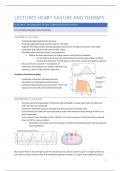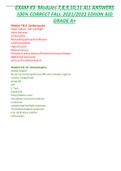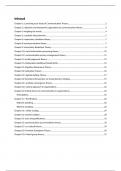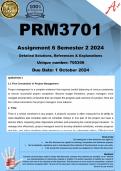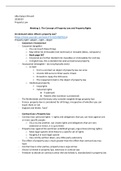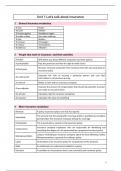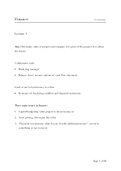College aantekeningen
Lectures Heart Failure & Therapy (AB_1211) (minor Biomedical Topics in Healthcare)
Notes of all the lectures given during the course Heart Failure and Therapy (minor Biomedical Topics in Healthcare). The document also contains many useful images that match the explanation of the course material. (vak voor o.a. gezondheidswetenschappen, gezondheid en leven, biomedische wetenschap...
[Meer zien]
